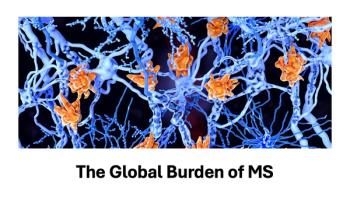
Top barriers to fully utilizing precision medicine biomarkers
As development of molecular biomarkers hastens, administrators, clinicians and regulators are working to organize and define biomarkers’ appropriate roles in clinical care-and discussing how to efficiently share the massive amounts of genomic data that will result.
Diagnostic, predictive, and prognostic molecular and genomic biomarkers are the cornerstone of personalized medicine. These assays can range from tests for individual proteins or gene mutations associated with disease aggressivity or probable treatment outcomes, to panels and even whole-genome tests.
A bewildering array of these molecular tests is in development but laboratories, administrators, providers, and regulators are still working out how best to validate these tools and bring them into clinical practice to improve patient care.
One crucial challenge will be implementing systems to share massive amounts of genomic testing data in national repositories, researchers said at a special education session on precision medicine on December 5 at the at the 58th American Society of Hematology (ASH) Annual Meeting in San Diego.
Lyman“Precision medicine certainly got a great deal of public attention two years ago when President Obama announced the
Much of the attention since Obama’s announcement has been focused on the hope and promise of biomarkers, Lyman said.
“Excitement’s been building with exponential improvements in our understanding of human and cancer genomes, and molecular targeting agents,” he said. “There are many opportunities stemming from our identification of multiple molecular targets, particularly in clinical oncology across various cancer types-including hematologic malignancies.”
Significant hurdles
But there are significant technical, clinical, and institutional hurdles, as well-and these have not been as widely appreciated.
“There are many challenges, ranging from establishing the analytic validity of tests we use and demonstrating that they actually measure what we say they measure, and that these assays’ results correlate with specific clinical outcomes, and ultimately, to demonstrate that the tests can change or improve clinical outcomes or improve clinical decision making in ways known to affect clinical outcomes-what we call ‘clinical utility,’” Lyman said.
Hematological cancers are “part and parcel” of this discussion, he added. “Chronic myeloid leukemia is the poster child of precision medicine. A number of targeted therapies have been introduced over the past few years, particularly targeting B cell receptors’ signaling pathways and identifying new agents.”
“We face challenges in how to bring all of these increased understandings down to the individual patient,” Lyman said.
One problem has been that most proposed biomarkers have low-level evidence in their favor, such as retrospective observational studies.
“We’re having prospective studies based on cohorts and registries and we’re looking forward to higher-level evidence from prospective randomized trials driven by biomarker results,” he said.
As better-designed studies become the norm, researchers will spend less time on candidate biomarkers that turn out not to be useful. “The role of pure chance or bias is being driven out,” he said.
Regulatory hurdles
Regulation is another complex area for those seeking to translate validated biomarkers into clinical use, Lyman said. “This is a whole new world for the FDA and the lab-certification community,” he noted.
“Reimbursement and clinical practice guidelines have also been challenges with dealing with this new onslaught of new and very complex information,” Lyman said. “In the end, we need to find balance between rapid clinical acceptance and validated clinical utility.”
As larger panels of biomarkers-and even whole-genome searches for hundreds of biomarkers-come into clinical use, those challenges will only become larger. So will the daunting task of developing clinical biomarker test results-sharing systems and national registries that will help identify problems and new uses for assays, Lyman and the other panelists agreed.
Siu“Most of us do not have these knowledge bases in our minds,” said Lillian L. Siu, MD, of the Princess Margaret Cancer Centre in Toronto, Ontario. Databases are emerging to track tumor gene biomarkers, she noted. These include the Atlas of Genetics and Cytogenetics in Oncology and Hematology database and the Cancer Driver Log.
Widespread sharing of biomarker test results and standardized reporting will be vital, Siu said. But the systems to accommodate that flood of data do not yet really exist, the panelists cautioned.
“There is concern that large-scale genomic data exceeds our capacity to appropriately analyze and interpret them,” Lyman said.
Nor is the current transition to biomarkers-driven personalized medicine going to be a period of upheaval followed by a new status-quo. As shared biomarker results accumulate and new analytical methods are adopted to comprehend their lessons, regulators, insurers, clinicians and institutions will have to adapt continually to rapidly-evolving understandings of what it all means for patients.
“Regulation, coverage, reimbursement and clinical practice will continue to rapidly evolve with new evidence-necessitating an informatics framework for rapidly collecting, analyzing and sharing clinical, genomic, treatment and outcomes data to inform research, clinical practice and policy decisions,” Lyman said.
In March 2016, the Institute of Medicine released “
Ten recommendations for molecular biomarkers
The report’s authors made 10 recommendations for molecular biomarkers:
1. Development of common standards of evidence for clinical utility and coordinating them with ongoing regulatory, reimbursement and coverage decisions for biomarker tests.
2. Establishment of an integrated multiagency federal review process to coordinate regulation, coverage and reimbursement decisions.
3. Development of patient- and provider-friendly standardized labeling for biomarker tests.
4. Updated and enforced laboratory accreditation standards for biomarker testing.
5. An insurer reimbursement model supporting “coverage with evidence development” payment for ongoing collection of data rather than only for definitively-validated biomarkers, and grant support for biomarkers’ clinical development.
6. Development of software the can capture and link biomarker tests and longitudinal clinical data for clinical use and transfer to a national database, and to facilitate clinical decision support for biomarker test ordering, reporting, and decision-making.
7. Development of a “sustainable, prospective, integrated national structured database” for biomarker data.
8. Support for studies to “identify and overcome economic, cultural/ethnic, and geographic barriers to access equity,” and public understanding of biomarker tests.
9. Development of standards for biomarker specimens handling and documentation.
10. Development of interdisciplinary guidelines for the use of biomarker tests, to be updated regularly.
Newsletter
Get the latest industry news, event updates, and more from Managed healthcare Executive.






















































